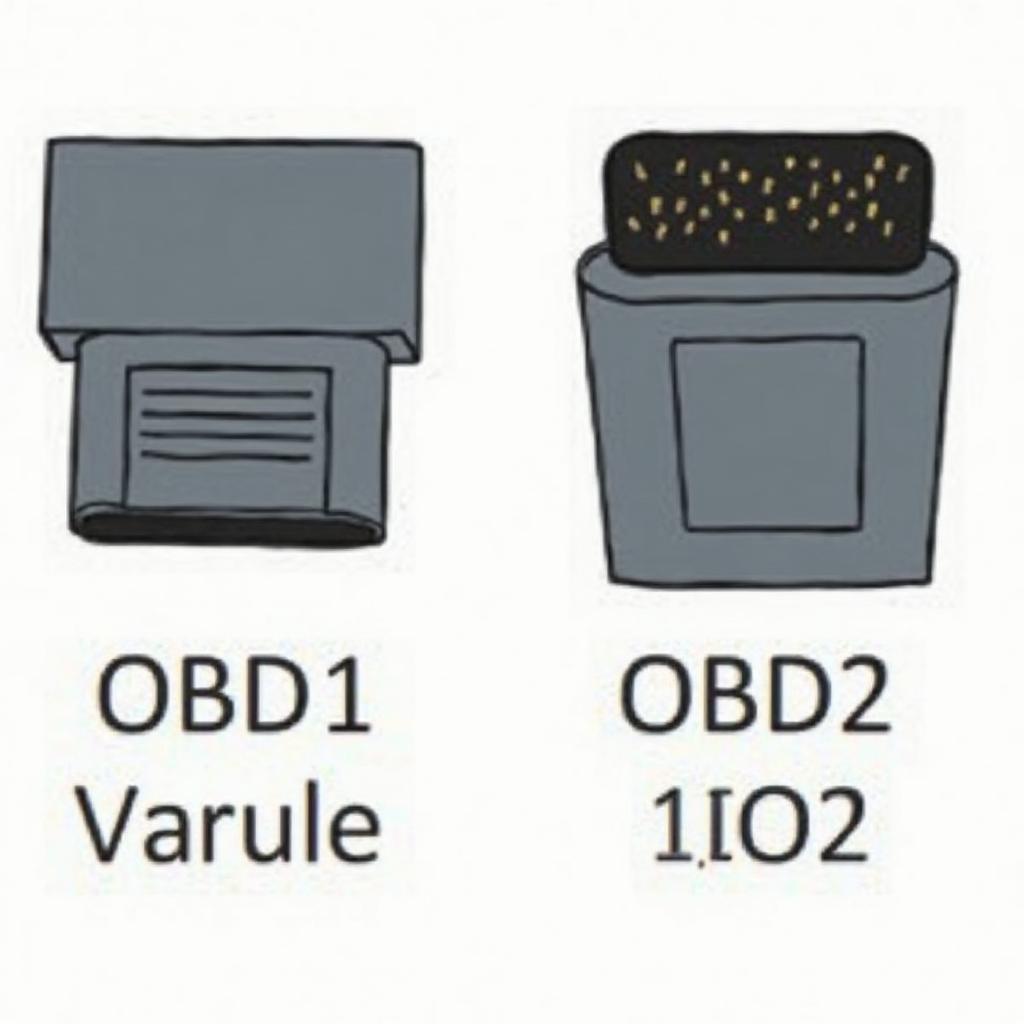OBD2 engine with OBD1 ECU is a common topic for car enthusiasts looking to upgrade or troubleshoot their vehicles. This article delves into the intricacies of mixing and matching these technologies, providing valuable insights and practical advice for those considering this modification. We’ll cover everything from understanding the core differences between OBD1 and OBD2 systems to exploring the potential challenges and solutions.
Can you run an OBD2 engine on an OBD1 ECU? The short answer is: it’s complicated. While it’s not a simple plug-and-play scenario, there are ways to achieve this with careful planning and the right modifications. Understanding the key distinctions between OBD1 and OBD2 is the first step. OBD1, or On-Board Diagnostics generation one, is a simpler system primarily focused on emissions control. OBD2, introduced in 1996 in the US, is more sophisticated and monitors a wider range of vehicle systems, providing more detailed diagnostic information. This difference in complexity poses the primary challenge when attempting to integrate an OBD2 engine with an OBD1 ECU.
Understanding OBD1 and OBD2 Systems
OBD1 systems are generally manufacturer-specific, meaning diagnostic procedures and codes vary significantly between car makes and models. This makes troubleshooting more challenging and often requires specialized equipment. OBD2, on the other hand, utilizes a standardized connector and set of diagnostic trouble codes (universal obd2 connector), simplifying diagnosis and repair across different vehicle platforms.
Key Differences in Functionality
OBD1 primarily monitors emissions-related components, such as the oxygen sensor and catalytic converter. OBD2 expands this scope to include a broader range of systems, including the transmission, ABS, and airbags. This enhanced monitoring capability makes OBD2 more effective in diagnosing and preventing potential issues.
Challenges of Using an OBD2 Engine with an OBD1 ECU
The primary challenge lies in the incompatibility of the communication protocols and the differing sensor inputs between the two systems. The OBD2 engine relies on more sensors and a more complex communication network than the OBD1 ECU can handle. This can lead to incorrect readings, fault codes, and even performance issues.
Compatibility Issues and Solutions
One of the most common issues is the difference in camshaft and crankshaft position sensor signals. OBD2 engines often use different sensor types or signals than OBD1 systems. This can cause timing issues and affect engine performance. Another challenge is the lack of support for OBD2-specific sensors, such as the evaporative emission control system (EVAP) sensor. The obd1 vs obd2 ecu comparison helps clarify these differences.
“The biggest hurdle is often the communication protocol,” says automotive engineer John Miller. “OBD2 uses a standardized protocol (CAN), while OBD1 systems vary greatly. This makes bridging the gap a significant technical challenge.”
Exploring Conversion Options
Despite the challenges, there are a few options for running an OBD2 engine on an OBD1 ECU. One approach involves using a standalone engine management system (EMS). A standalone EMS replaces the factory ECU and provides full control over engine parameters, allowing for custom tuning and sensor integration. This, however, can be a complex and expensive solution.
Standalone Engine Management Systems (EMS) and Adapters
Another option involves using an adapter harness that converts the OBD2 engine’s signals to a format compatible with the OBD1 ECU. This approach can be less expensive than a standalone EMS, but it may not be suitable for all applications and may require some level of custom wiring. How to run obd2 engine on obd1 ecu offers more in-depth information.
“Using an adapter harness can be a viable solution for simpler engine swaps,” adds Miller. “However, it’s crucial to ensure the harness is specifically designed for the engine and ECU combination you’re using.”
Understanding the Implications
Running an OBD2 engine with an OBD1 ECU can have implications for emissions compliance and vehicle inspections. In some regions, modifying the emissions control system can be illegal and may result in failing emissions tests. It’s essential to check local regulations before undertaking such modifications. For more information on the evolution of OBD systems, see obd0 obd1 obd2 wikipedia.
Legal and Practical Considerations
Beyond legal compliance, there are practical considerations as well. Using an OBD1 ECU with an OBD2 engine can limit the diagnostic capabilities and may make it difficult to identify and resolve future issues.
“While it’s technically possible to run an OBD2 engine with an OBD1 ECU, it’s not always the most practical or advisable solution,” says Maria Sanchez, a certified mechanic. “It’s important to weigh the benefits and drawbacks carefully before proceeding.”
In conclusion, running an OBD2 engine with an OBD1 ECU presents several challenges and requires careful planning and execution. While there are conversion options available, it’s crucial to understand the implications and choose the approach that best suits your needs and complies with local regulations. Understanding the nuances of obd2 engine with obd1 ecu is essential for making informed decisions.
FAQ
- Is it legal to run an OBD2 engine with an OBD1 ECU? This depends on local regulations.
- What are the benefits of using a standalone EMS? A standalone EMS offers greater control over engine parameters and allows for custom tuning.
- What’s the cheapest way to convert? An adapter harness can be a less expensive option than a standalone EMS.
- Will I pass emissions testing with this setup? This depends on the specific modifications and local regulations.
- What are the potential drawbacks? Limited diagnostic capabilities and potential emissions compliance issues.
- What is the difference between chassis ground vs signal ground obd2? You can find more information at chassis ground vs signal ground obd2.
- Where can I find more information? Check our website for more in-depth articles on OBD systems.
Need help with your OBD2 engine and OBD1 ECU project? Contact us on WhatsApp: +1(641)206-8880, Email: [email protected] or visit us at 789 Elm Street, San Francisco, CA 94102, USA. We have a 24/7 customer service team ready to assist you.


